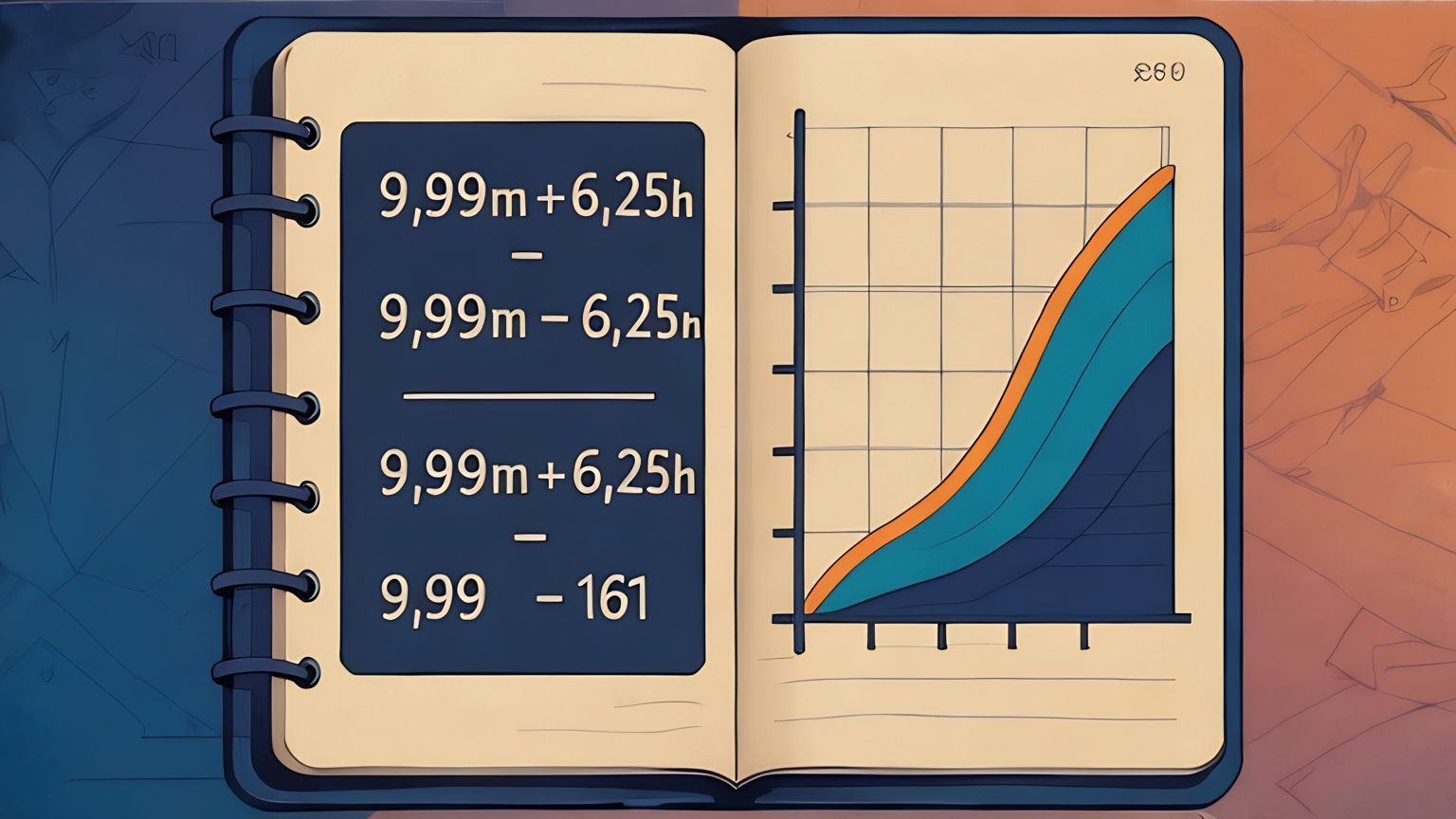Unlocking Your Caloric Needs with the Mifflin-St Jeor Equation
Are you striving to reach your fitness goals, whether it’s losing weight, building muscle, or simply maintaining a healthy lifestyle? A crucial first step in tailoring your diet and exercise plan is understanding how many calories your body needs to function effectively. Enter the Mifflin-St Jeor Equation, a modern and more accurate formula for calculating your caloric needs, providing a clear baseline for achieving your health objectives.
In this article, we’ll dive into what the Mifflin-St Jeor Equation is, why it’s widely favored, how it’s calculated, and how you can use it to supercharge your nutrition and fitness journey. With this powerful equation in your toolkit, you can take a data-driven approach to achieving your goals and understanding your body’s energy requirements.
Mifflin-St Jeor Equation Calculator
What Is the Mifflin-St Jeor Equation?
The Mifflin-St Jeor Equation is a formula designed to estimate your Basal Metabolic Rate (BMR) and Total Daily Energy Expenditure (TDEE). BMR represents the number of calories your body needs at rest to perform vital functions, such as breathing, circulation, and cell production. TDEE, on the other hand, factors in your daily activity levels and gives a more complete picture of the calories you need to maintain your current weight.
Developed in 1990 by Mifflin and St Jeor, the equation replaced older formulas, like the Harris-Benedict Equation, with a more precise and accurate calculation of caloric needs, taking into account modern body composition and activity levels. The Mifflin-St Jeor Equation has since become a widely adopted method for calculating caloric needs because it offers a better estimate for the majority of individuals.
Why Use the Mifflin-St Jeor Equation?
Understanding your body’s caloric needs is crucial for anyone seeking to make informed decisions about their diet and fitness. Whether you are a seasoned athlete looking to optimize performance or someone embarking on a weight loss journey, knowing how to calculate your daily energy requirements allows you to create a personalized plan that aligns with your goals.
Here are several reasons why the Mifflin-St Jeor Equation is a game-changer for fitness and nutrition:
Accurate and Updated: Compared to older equations, the Mifflin-St Jeor Equation takes into account more modern science and data, providing more accurate estimations of your caloric needs.
Essential for Goal Setting: Whether you’re looking to lose weight, gain muscle, or maintain your current weight, knowing your BMR and TDEE is essential to formulating a realistic nutrition and fitness plan.
Helps Fine-Tune Your Diet: By understanding your caloric needs, you can adjust your macronutrients—proteins, fats, and carbohydrates—to suit your goals, ensuring you get the best results from your hard work.
How Is the Mifflin-St Jeor Equation Calculated?
Calculating your BMR and TDEE using the Mifflin-St Jeor Equation is relatively simple. The first step is calculating your Basal Metabolic Rate (BMR), followed by adjusting that number based on your activity level to determine your Total Daily Energy Expenditure (TDEE). Let’s break it down step by step.
Step 1: Calculate Your BMR
Step 2: Adjust for Activity Level to Find Your TDEE
Once you have your BMR, you can adjust it for your activity level to determine your Total Daily Energy Expenditure (TDEE). TDEE represents the number of calories you burn in a day, taking into account physical activity. The equation uses a multiplier to account for different levels of physical activity. Here are the common activity levels and their corresponding multipliers:
Sedentary (little to no exercise): BMR × 1.2
Lightly Active (light exercise/sports 1-3 days per week): BMR × 1.375
Moderately Active (moderate exercise/sports 3-5 days per week): BMR × 1.55
Very Active (hard exercise/sports 6-7 days per week): BMR × 1.725
Super Active (very hard exercise or physical job): BMR × 1.9
To calculate your TDEE, simply multiply your BMR by the appropriate activity level factor based on your exercise habits. This gives you the total number of calories your body requires to maintain your current weight, considering both your resting energy expenditure and activity level.
Using the Mifflin-St Jeor Equation for Your Fitness Goals
Now that you know how to calculate your BMR and TDEE, it’s time to use this information to align with your fitness and nutrition goals. Here’s how you can apply the equation to achieve your desired results:
For Weight Loss
If you want to lose weight, you need to create a calorie deficit, which means consuming fewer calories than your TDEE. This will force your body to burn stored fat for energy. A common recommendation is to aim for a calorie deficit of 10-20% of your TDEE. This approach promotes gradual and sustainable weight loss while preserving lean muscle mass.
For example, if your TDEE is 2,500 calories per day, reducing your daily intake by 15% (around 375 calories) would set your target intake at 2,125 calories per day.
For Muscle Gain
To build muscle, you need to consume more calories than your body burns, known as a calorie surplus. A surplus of around 10-20% above your TDEE will provide your body with the energy needed for muscle growth and recovery after workouts. The additional calories help repair and build muscle tissue, supporting strength gains over time.
If your TDEE is 2,500 calories per day, consuming an extra 15% (around 375 calories) will bring your target intake to 2,875 calories per day to promote muscle growth.
For Weight Maintenance
If you’re happy with your current weight and want to maintain it, simply consume the number of calories your body burns—your TDEE. This helps keep your body in a balanced state without gaining or losing weight. It’s important to monitor your progress and adjust as needed, especially if your activity level or lifestyle changes.
For instance, if your TDEE is 2,500 calories, aim to eat around that amount to keep your weight stable.
Common Misconceptions About the Mifflin-St Jeor Equation
Although the Mifflin-St Jeor Equation is highly regarded, there are a few things to keep in mind when using it:
Body Composition Variations: The equation doesn’t account for body composition (muscle vs. fat), so individuals with higher muscle mass may have a higher caloric need than the equation suggests.
Metabolic Adaptation: Over time, as you lose weight or change your activity level, your body may adapt by lowering its metabolic rate. This means that your caloric needs may decrease, and you may need to adjust your intake accordingly.
Accuracy of Activity Level: The multipliers used for activity levels are general estimates. If you have a more intense workout routine or a job that requires heavy physical activity, your actual calorie burn may be higher than the standard activity levels reflect.
Benefits of Using the Mifflin-St Jeor Equation Calculator
Although calculating your BMR and TDEE manually is possible, using a Mifflin-St Jeor Equation Calculator can save time and streamline the process. These calculators take the guesswork out of the equation, providing instant and accurate results based on your personal data.
The benefits of using a calculator include:
Convenience: Instant results at the click of a button, saving you time.
Customization: You can easily enter your unique data to get a tailored estimate of your caloric needs.
Accurate Tracking: As your body changes, calculators can help you track and adjust your caloric intake to meet your evolving goals.
Ease of Use: Most calculators are simple to use and require only basic information like your age, height, weight, and activity level.
Take Control of Your Caloric Needs
The Mifflin-St Jeor Equation is a powerful tool that provides valuable insights into your body’s caloric needs. Whether your goal is weight loss, muscle gain, or simply maintaining your weight, this equation helps you make informed decisions about your nutrition and fitness plan. By understanding your Basal Metabolic Rate and Total Daily Energy Expenditure, you’re in a better position to tailor your diet, set realistic goals, and track your progress over time.
Remember, the Mifflin-St Jeor Equation is just a starting point. Use it as a tool to guide your decisions, but always listen to your body and make adjustments as needed. Your fitness journey is unique, and by taking charge of your caloric needs, you’re one step closer to achieving your personal best.




